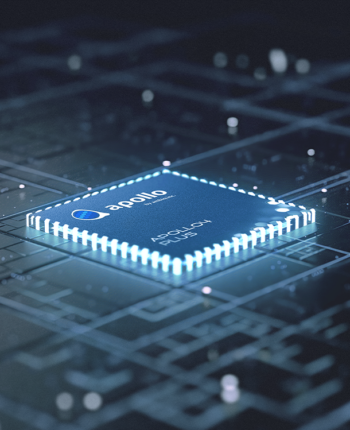New Step by Step Map For Artificial intelligence developer
New Step by Step Map For Artificial intelligence developer
Blog Article

Accomplishing AI and object recognition to type recyclables is elaborate and will require an embedded chip able to managing these features with higher effectiveness.
Prompt: A gorgeously rendered papercraft environment of the coral reef, rife with colorful fish and sea creatures.
Knowledge Ingestion Libraries: economical capture facts from Ambiq's peripherals and interfaces, and minimize buffer copies by using neuralSPOT's characteristic extraction libraries.
You’ll uncover libraries for talking to sensors, controlling SoC peripherals, and controlling power and memory configurations, together with tools for conveniently debugging your model from your laptop computer or PC, and examples that tie everything with each other.
Smart Selection-Building: Using an AI model is comparable to a crystal ball for viewing your upcoming. The use of this kind of tools help in examining related info, recognizing any craze or forecast that would guideline a business in generating clever decisions. It involves less guesswork or speculation.
IoT endpoint machine brands can be expecting unmatched power effectiveness to create more able products that course of action AI/ML features better than before.
Prompt: An attractive silhouette animation reveals a wolf howling for the moon, sensation lonely, till it finds its pack.
Initially, we need to declare some buffers for that audio - you will find two: 1 wherever the raw knowledge is saved from the audio DMA motor, and another in which we retail store the decoded PCM information. We also should define an callback to take care of DMA interrupts and shift the info in between the two buffers.
This true-time model is really a set of three separate models that do the job jointly to apply a speech-centered consumer interface. The Voice Activity Detector is smaller, productive model that listens for speech, and ignores everything else.
Future, the model is 'experienced' on that information. At last, the qualified model is compressed and deployed towards the endpoint products in which they are going to be place to operate. Each of such phases needs significant development and engineering.
Basic_TF_Stub can be a deployable search phrase recognizing (KWS) AI model according to the MLPerf KWS benchmark - it grafts neuralSPOT's integration code into the present model in an effort to help it become a performing search phrase spotter. The code takes advantage of the Apollo4's low audio interface to gather audio.
We’re pretty excited about generative models at OpenAI, and also have just produced four tasks that progress the point out from the art. For every of these contributions we will also be releasing a technological report and source code.
Our website works by using cookies Our website use cookies. By continuing navigating, we presume your authorization to deploy cookies as in depth inside our Privacy Plan.
IoT applications depend intensely on information analytics and authentic-time choice generating at the bottom latency achievable.
Accelerating the Development of Optimized AI Features with Ambiq’s neuralSPOT
Ambiq’s neuralSPOT® is an open-source AI developer-focused SDK designed for our latest Apollo4 Plus system-on-chip (SoC) family. neuralSPOT provides an on-ramp to the rapid development of AI features for our customers’ AI applications and products. Included with neuralSPOT are Ambiq-optimized libraries, tools, and examples to help jumpstart AI-focused applications.
UNDERSTANDING NEURALSPOT VIA THE BASIC TENSORFLOW EXAMPLE
Often, the best way to ramp up on a new software library is through a comprehensive example – this is why neuralSPOt includes basic_tf_stub, an illustrative example that leverages many of neuralSPOT’s features.
In this article, we walk through the example block-by-block, using it as a guide to building AI features using neuralSPOT.
Ambiq's Vice President of Artificial Intelligence, Carlos Morales, went on CNBC Street Signs Asia to discuss the power consumption of AI and trends in endpoint devices.
Since 2010, Ambiq has been a leader in ultra-low power semiconductors that enable endpoint devices with more data-driven and AI-capable features while dropping the energy requirements up to 10X lower. They do this with the patented Subthreshold Power Smart spectacle Optimized Technology (SPOT ®) platform.
Computer inferencing is complex, and for endpoint AI to become practical, these devices have to drop from megawatts of power to microwatts. This is where Ambiq has the power to change industries such as healthcare, agriculture, and Industrial IoT.
Ambiq Designs Low-Power for Next Gen Endpoint Devices
Ambiq’s VP of Architecture and Product Planning, Dan Cermak, joins the ipXchange team at CES to discuss how manufacturers can improve their products with ultra-low power. As technology becomes more sophisticated, energy consumption continues to grow. Here Dan outlines how Ambiq stays ahead of the curve by planning for energy requirements 5 years in advance.
Ambiq’s VP of Architecture and Product Planning at Embedded World 2024
Ambiq specializes in ultra-low-power SoC's designed to make intelligent battery-powered endpoint solutions a reality. These days, just about every endpoint device incorporates AI features, including anomaly detection, speech-driven user interfaces, audio event detection and classification, and health monitoring.
Ambiq's ultra low power, high-performance platforms are ideal for implementing this class of AI features, and we at Ambiq are dedicated to making implementation as easy as possible by offering open-source developer-centric toolkits, software libraries, and reference models to accelerate AI feature development.
NEURALSPOT - BECAUSE AI IS HARD ENOUGH
neuralSPOT is an AI developer-focused SDK in the true sense of the word: it includes everything you need to get your AI model onto Ambiq’s platform. You’ll find libraries for talking to sensors, managing SoC peripherals, and controlling power and memory configurations, along with tools for easily debugging your model from Edge intelligence your laptop or PC, and examples that tie it all together.
Facebook | Linkedin | Twitter | YouTube